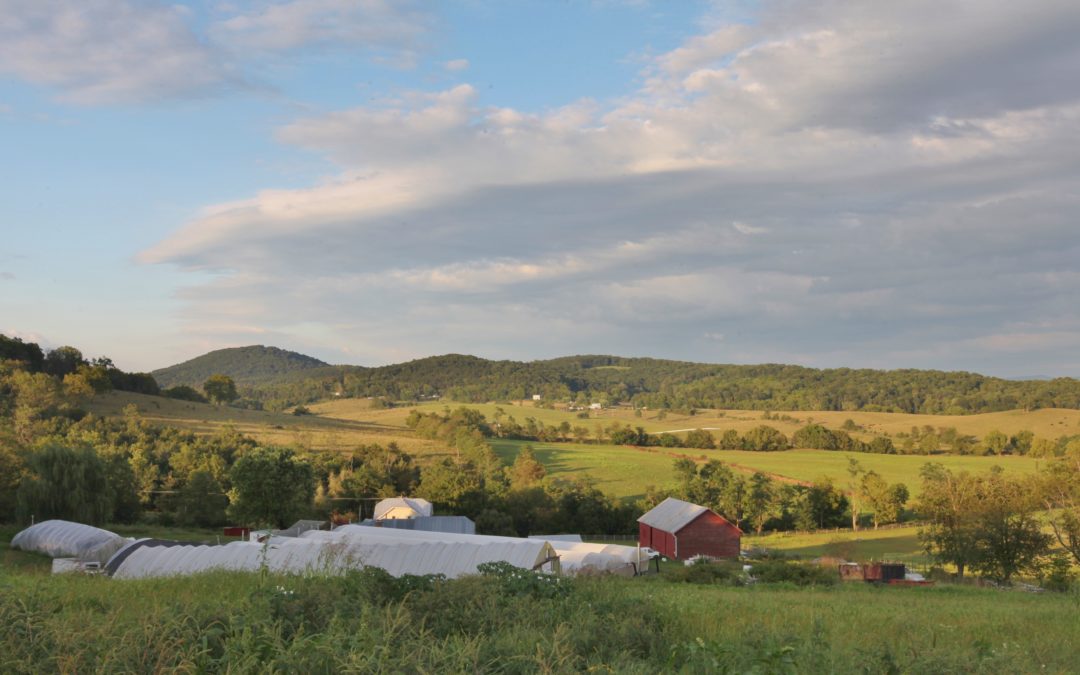The Central Shenandoah Valley, population 368,000, is a large geographic area spanning 4,264 square miles in western Virginia. The region includes seven counties—Augusta, Bath, Highland, Page, Rockbridge, Rockingham, and Shenandoah—and the five independent cities of Buena Vista, Harrisonburg, Lexington, Staunton, and Waynesboro. The Central Shenandoah Planning District Commission (CSPDC) represents the governments in this area with a focus on land use planning, transportation, water and natural resource management, economic and community development, disaster mitigation and agritourism.
Their Challenge
For years, the CSPDC was part of conversations with farmers and community members about the need for a commercial kitchen space to process and preserve their crops and prepare value-added goods, and the desire for an aggregation and storage hub for agricultural products in order to be able to sell into bigger, more diverse markets. As regional planners representing a very large and geographically diverse area, the CSPDC was interested in assessing their food system landscape and understanding the true needs and challenges that existed among farmers, buyers, and food entrepreneurs in the region. If the demand was there, they wanted to understand specifically what features a potential Agricultural Enterprise Center should have to meet the needs of their community and demands of local consumers.
They applied for and were awarded a Local Food Promotion Program grant from the USDA. Combined with a GO Virginia Enhanced Capacity Building grant, CSPCD used these funds to assess the feasibility of a multi-use agricultural facility that would serve the area’s small farmers and food business entrepreneurs in need of certified kitchen, processing, aggregating, and storage space and perhaps more.
Partnering with New Venture Advisors
New Venture Advisors was brought on board to conduct a food system assessment and feasibility study for the potential facility. The study was developed using both primary and secondary research looking at three key stakeholder groups: producers, food buyers, and food businesses and the strengths and challenges that existed in their local food system. Over 150 stakeholders provided their perspectives through interviews, surveys and focus groups. A single operating model–the Shenandoah Specialty Meat & Produce Hub–was voted on by the CSPDC’s steering committee. Its aim is to serve small to midsize vegetable producers in the Shenandoah Valley through a produce aggregation hub, with a special emphasis on supporting meat producers through specialty meat aggregation, processing, and butchery services in addition to workforce development training in meat fabrication skills. The Hub will house a certified commercial kitchen to support food businesses at all stages with shared storage and equipment. The Hub will also act as a central knowledge clearinghouse for local food and agricultural education, assistance, events and trainings happening within the region.
A financial analysis of the chosen operating model supports the financial feasibility for the facility, and will aid in fundraising for an estimated $5 million investment for land, construction, equipment and working capital. The report was published in May 2021 and is available to download from our website.
Moving Forward
New Venture Advisors presented a list of immediate next steps for the CSPDC and their steering committee at the commencement of the study: continue to conduct stakeholder outreach, identify and strengthen third-party partnerships and continue to search for a site and operator.
NVA also recommended actions for the development phase of the project which may be performed by the CSPDC, the operator/owner, a grower-owner board or any combination of the aforementioned stakeholders:
- Formalize partnerships and secure a location. Finalize site, operator and anchor tenant searches.
- Begin facility design. Update the operating model and building program based on the chosen site, operator, and anchor tenant requirements.
- Develop the business plan. Complete a comprehensive business plan that reflects the strategic vision of the selected owner/operator and their operating model.
- Commence fundraising. Create a fundraising plan to explore and secure diverse streams of capital from both public and private investors.
Photo of Sinclair Farm, Mt. Jackson courtesy of CSPDC



